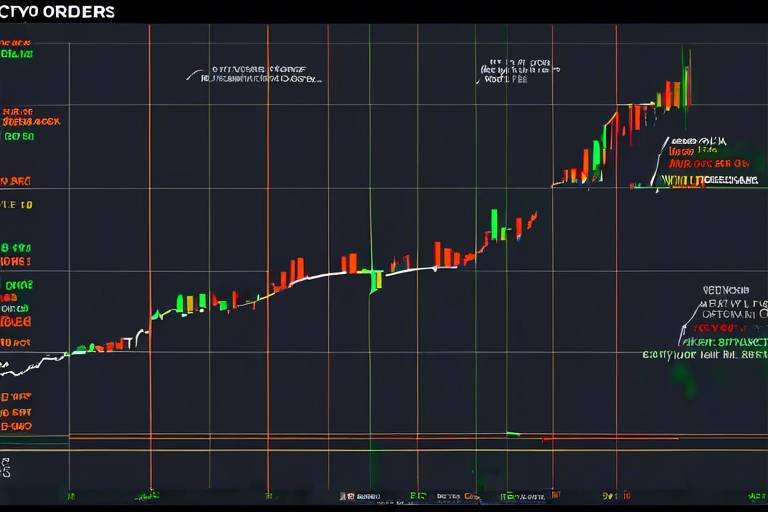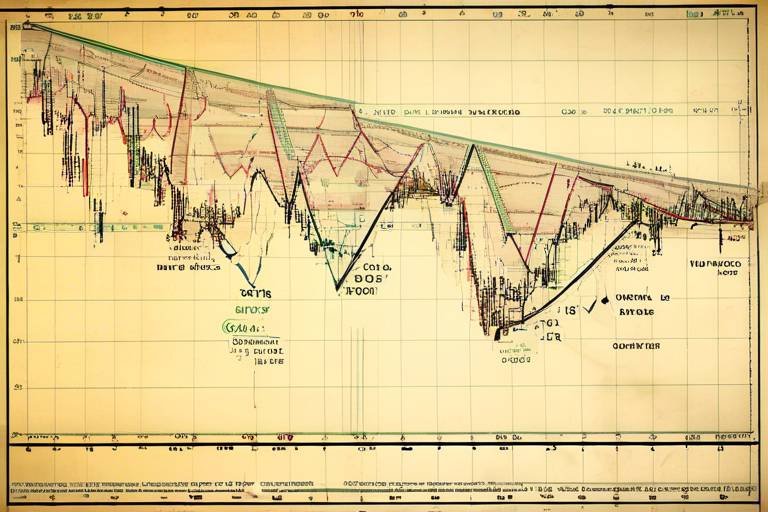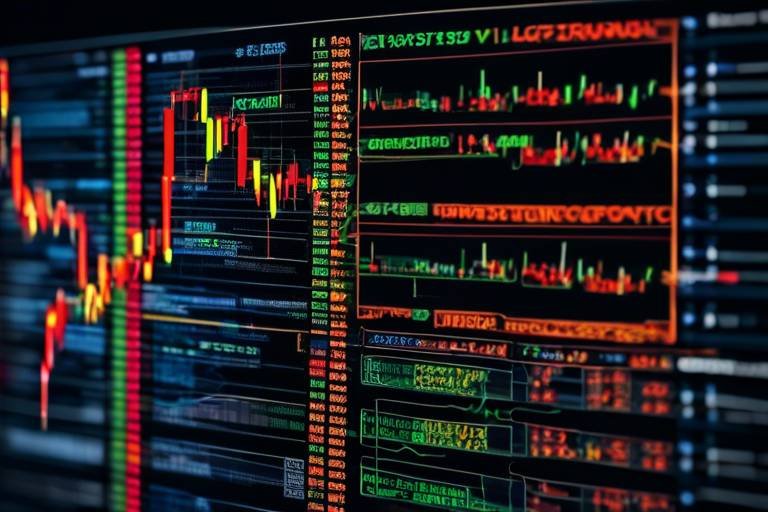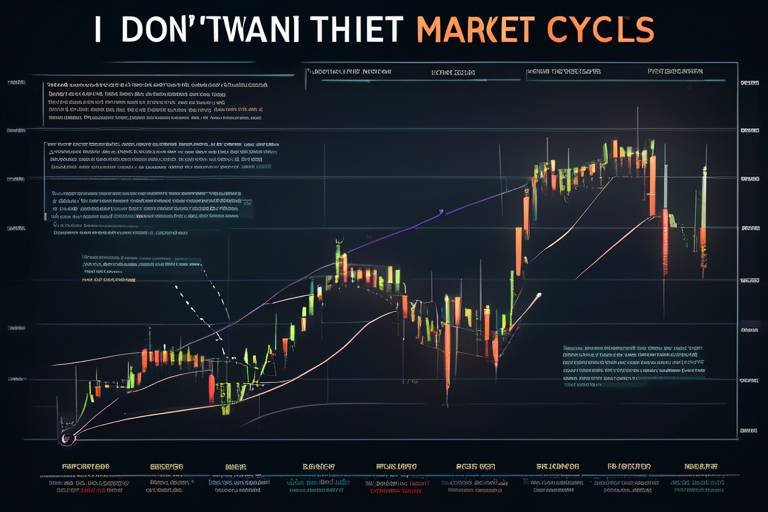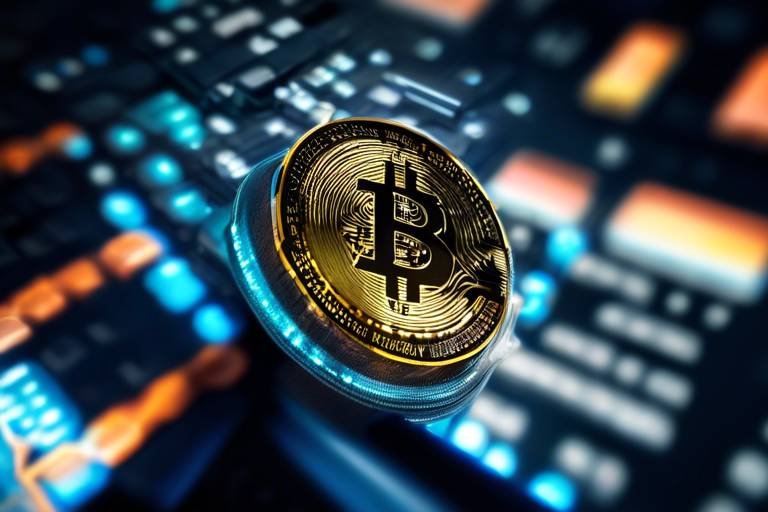Understanding Market Orders vs. Limit Orders in Crypto
In the fast-paced world of cryptocurrency trading, understanding the nuances between market orders and limit orders is crucial for maximizing your trading strategy. Whether you're a seasoned trader or just stepping into the crypto arena, knowing when to use each type of order can significantly impact your trading success. In this article, we will delve into the mechanics of these orders, their advantages and disadvantages, and the best scenarios for their use. By the end, you’ll have a clearer picture of how to navigate the complexities of crypto trading with confidence.
A market order is essentially an instruction to buy or sell a cryptocurrency at the best available price in the market at that moment. Imagine you're at a bustling marketplace, and you want to buy some fresh fruit. You simply pay the vendor the listed price without haggling. That's how a market order operates—it’s all about speed and convenience. When you place a market order, you're prioritizing immediate execution over price precision. This is particularly beneficial in a rapidly changing market where prices can fluctuate wildly within seconds. Market orders are generally executed almost instantly, which makes them a go-to choice for traders who need to act quickly.
On the flip side, a limit order allows traders to specify the exact price at which they want to buy or sell a cryptocurrency. Think of it as setting a price cap on your shopping spree. If you’re not willing to pay more than $5 for that fruit, you’ll wait until the vendor lowers the price. This order type provides traders with more control over their transactions, as it ensures that they won’t pay more than their desired price when buying or sell for less than they want when liquidating assets. Limit orders can be particularly advantageous in volatile markets, where prices can swing dramatically and you want to ensure you’re not caught off guard.
Market orders come with a host of advantages that make them appealing for many traders. First and foremost, they are executed quickly and efficiently, allowing traders to capitalize on fleeting market opportunities. This speed is vital in the crypto world, where every second counts. Additionally, market orders are straightforward to use, making them perfect for beginners who may find the complexities of limit orders daunting. However, with great speed comes great responsibility—traders must be aware of potential price discrepancies that can occur during periods of high volatility.
While market orders have their perks, they are not without risks. One of the primary downsides is that they can lead to unfavorable prices in volatile markets. If the market is experiencing rapid fluctuations, you might end up buying at a much higher price or selling at a much lower price than you intended. This phenomenon, known as slippage, can eat into your profits or exacerbate your losses. Therefore, while market orders are great for quick trades, they may not always be the best choice in unpredictable market conditions.
Market orders shine in specific trading scenarios. They are particularly effective during periods of high liquidity, where there are plenty of buyers and sellers in the market. This ensures that your order will be executed quickly and at a price close to the market rate. Additionally, market orders are ideal for traders who need to react swiftly to news or events that could impact prices. For instance, if a major announcement is made that is likely to cause a price surge, using a market order can help you get in on the action before prices skyrocket.
Limit orders provide a level of control that market orders simply cannot match. By allowing traders to set a precise price for their transactions, limit orders offer price assurance—you know exactly what you’ll pay or receive. This can be particularly valuable in a volatile market where prices can swing dramatically. Moreover, limit orders can be used strategically to plan trades around specific price targets, enabling traders to execute their strategies with more finesse. For instance, if you believe a cryptocurrency is undervalued at a certain price, you can set a limit order to buy at that price, ensuring you don’t overpay.
Despite their advantages, limit orders come with their own set of challenges. The most significant drawback is that they may not execute immediately, or at all, if the market price does not reach your specified limit. This can result in missed opportunities, especially in fast-moving markets. If the price is rapidly increasing and you’re waiting for a lower entry point, you might find yourself left out of the action altogether. Therefore, while limit orders provide control, they also require patience and a willingness to potentially forgo immediate trades.
Deciding when to use market orders versus limit orders boils down to your trading strategy and the current market conditions. If you’re looking to make quick trades and capitalize on immediate price movements, market orders are your best bet. However, if you have a specific price point in mind and can afford to wait for the market to meet that price, limit orders can be more advantageous. Understanding the context of the market—whether it's experiencing high volatility or steady movement—will guide your decision making.
Interestingly, many successful traders find that a combination of both market and limit orders can enhance their trading effectiveness. By using market orders for quick entries and limit orders for strategic exits, traders can create a balanced approach that maximizes their potential for profit while managing risk. This dual strategy allows traders to remain flexible and responsive to market changes while still adhering to their overall trading plan.
- What is the main difference between market and limit orders? Market orders execute immediately at the current market price, while limit orders set a specific price at which to buy or sell.
- When should I use a market order? Use a market order when you need to execute a trade quickly and the current price is acceptable to you.
- Are limit orders always better? Not necessarily; while they provide price control, they may not execute if the market doesn't reach your set price.
- Can I use both order types in my trading strategy? Absolutely! Many traders find that combining both market and limit orders can be beneficial.
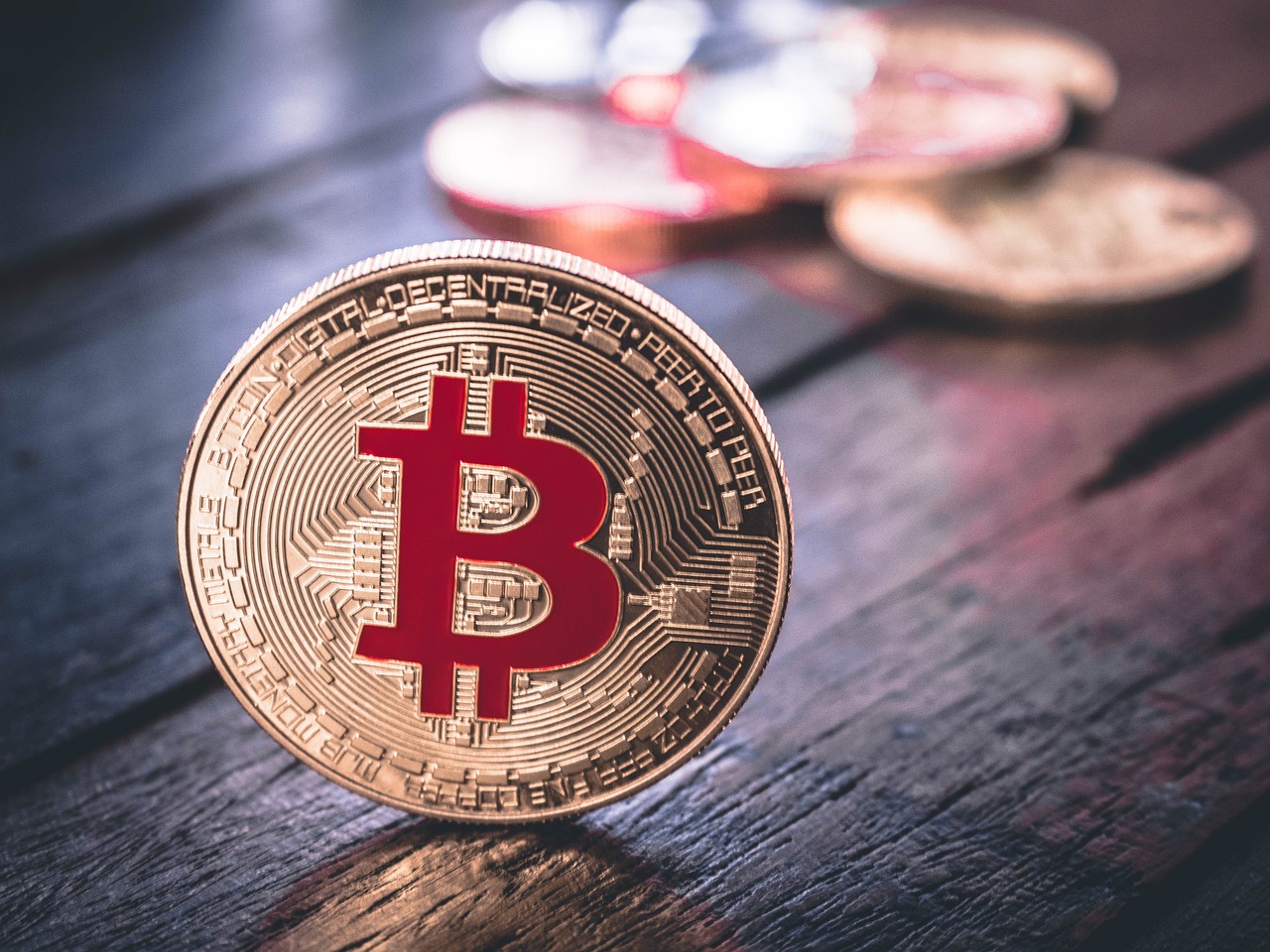
What is a Market Order?
A market order is one of the simplest and most commonly used types of orders in cryptocurrency trading. Essentially, it is an order to buy or sell a cryptocurrency immediately at the current market price. Imagine you're at a bustling marketplace, and you see a vendor selling fresh fruits. You don’t haggle or wait for a better price; you simply grab the fruits at the price they're being offered. That's what a market order does in the world of crypto!
When you place a market order, you're saying, "I want to buy or sell right now, no matter what the price is." This is particularly useful when you're looking to make a quick transaction and don’t want to waste time waiting for a specific price. Market orders are executed almost instantaneously, provided there's enough liquidity in the market. Liquidity refers to how easily an asset can be bought or sold without affecting its price, and in the crypto space, some coins are much more liquid than others.
Here’s how it works: when you place a market order, it gets matched with the best available price on the order book. The order book is like a digital ledger that lists all buy and sell orders for a particular cryptocurrency. If you're buying, your order will match with the lowest sell order, and if you're selling, it will match with the highest buy order. This process is what makes market orders so quick and efficient.
However, it’s important to note that while market orders are fast, they can lead to unexpected outcomes, especially in highly volatile markets. Prices can fluctuate rapidly, and you might end up buying at a much higher price or selling at a much lower price than you anticipated. This phenomenon is often referred to as slippage, which occurs when the execution price differs from the expected price due to market movement.
In conclusion, a market order is a powerful tool for traders who prioritize speed and are willing to accept current market prices. It’s perfect for situations where timing is crucial, like during major news events or when prices are on the move. However, one must always be aware of the potential for slippage, especially in a market as unpredictable as cryptocurrency.
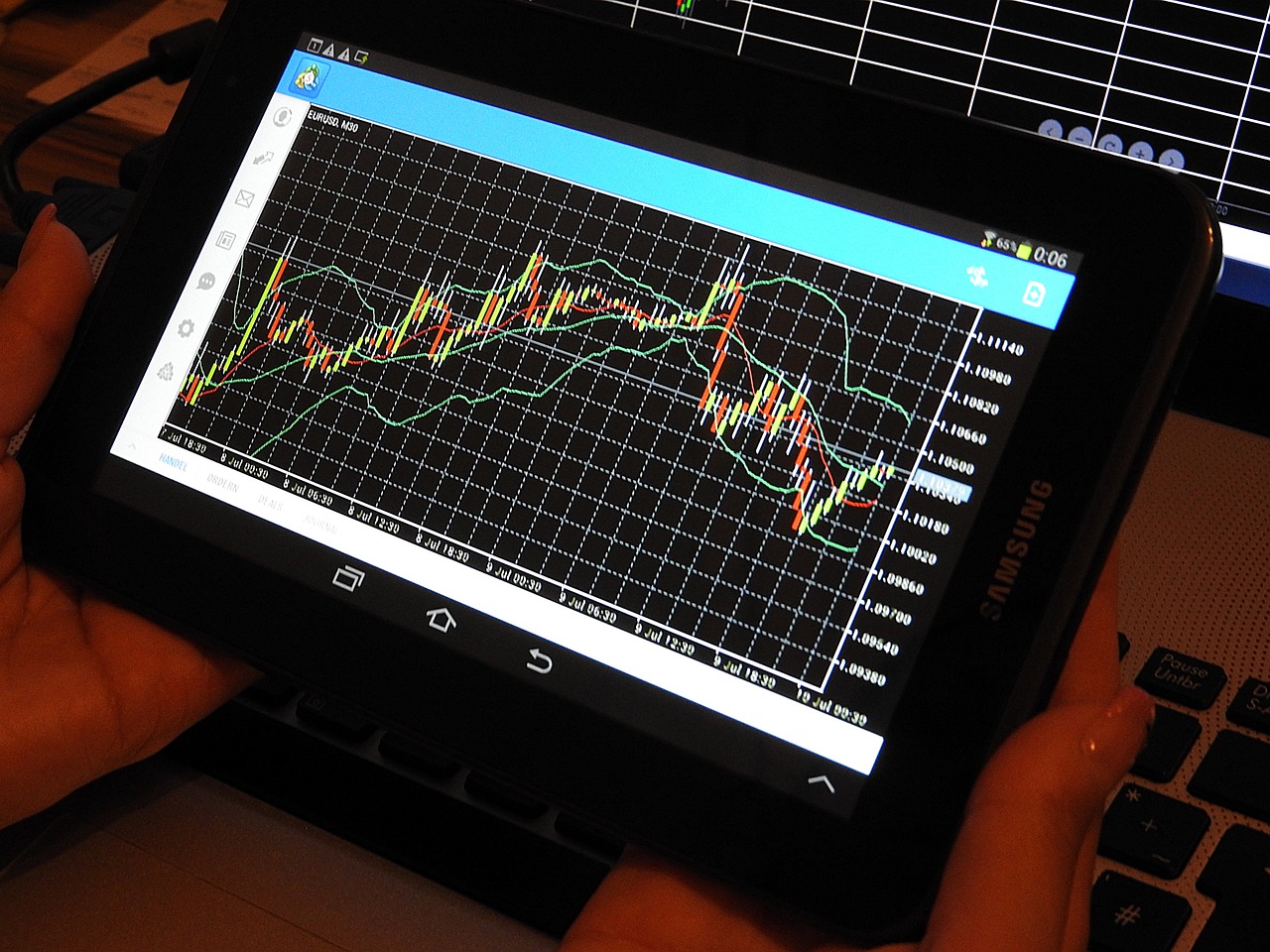
What is a Limit Order?
A limit order is a powerful tool in the cryptocurrency trading arsenal, allowing traders to buy or sell an asset at a specific price or better. Imagine you're at a marketplace, and you see a vendor selling apples for $1 each. Instead of paying that price immediately, you tell the vendor, "I'll buy these apples, but only if you offer them at 80 cents." This is essentially how a limit order works; you set the price you're willing to pay or receive, and the trade will only execute if the market meets that price.
Limit orders are particularly useful in the volatile world of cryptocurrency, where prices can swing dramatically in a short period. They allow traders to exercise a degree of control over their transactions, ensuring that they don't end up buying high or selling low. When you place a limit order, it remains in the system until it is either executed or canceled. This means you can set your desired price and go about your day, confident that you're not going to be caught off guard by sudden market movements.
There are two main types of limit orders: buy limit orders and sell limit orders. A buy limit order is placed below the current market price, meaning you're waiting for the price to drop before you buy. Conversely, a sell limit order is set above the current market price, indicating you're looking to sell when the price rises to your desired level. This strategic placement allows traders to navigate the market with a clear plan, rather than reacting impulsively to price changes.
To give you a clearer picture, here’s a quick comparison of how limit orders function:
| Order Type | Action | Price Condition |
|---|---|---|
| Buy Limit Order | Buy | At or below a specified price |
| Sell Limit Order | Sell | At or above a specified price |
In summary, limit orders offer a way to trade cryptocurrencies with precision, allowing for better price control and strategic planning. They are particularly beneficial for traders who want to avoid the pitfalls of sudden price fluctuations and are willing to wait for the right moment to execute their trades. However, it's essential to remember that while limit orders provide control, they also come with their own set of challenges, which we'll explore in the following sections.

Advantages of Market Orders
When it comes to trading cryptocurrencies, market orders stand out as one of the most straightforward and efficient ways to execute a trade. Imagine you're at a bustling market, and you want to buy some fresh fruits. You don’t haggle over prices; you simply grab what you want at the current price. That’s the essence of a market order! The primary advantage of placing a market order is its speed of execution. In the fast-paced world of crypto trading, every second counts, and market orders ensure that you can buy or sell your assets almost instantly.
Another key benefit is the simplicity that market orders provide. For traders who may not have the time or expertise to analyze price movements in detail, market orders allow them to engage in trading without the complexities involved in setting specific price points. This makes it an appealing option for both novice traders and those looking to make quick decisions without getting bogged down by the nitty-gritty of market analysis.
Furthermore, market orders are particularly advantageous during periods of high liquidity. When the market is bustling with activity, finding buyers or sellers for your cryptocurrency is much easier. This means that you are less likely to encounter slippage—where your order is executed at a less favorable price than expected—because there are plenty of participants ready to take the other side of your trade. In such scenarios, market orders can be executed at or very close to the current market price, making them a reliable choice.
To summarize, the advantages of market orders can be encapsulated as follows:
- Instant execution: Market orders are filled quickly, making them ideal for time-sensitive trades.
- Simplicity: Easy to understand and execute, perfect for traders of all experience levels.
- Effective in high liquidity: Minimized risk of slippage during active trading periods.
In conclusion, if you're looking for a trading method that prioritizes speed and ease of use, market orders are an excellent choice. However, as with any trading strategy, it's essential to consider the market conditions and your personal trading goals to determine if a market order is the right fit for your needs.

Disadvantages of Market Orders
While market orders are often celebrated for their speed and efficiency, they come with a set of disadvantages that traders should be keenly aware of. One of the primary concerns is the potential for slippage. This occurs when the market price changes between the time the order is placed and when it is executed. Imagine you're at a bustling market, ready to buy a rare item. You shout out your offer, but by the time the seller hears you, the price has already gone up. This is what can happen with market orders, especially in highly volatile markets.
Another significant drawback is the lack of price control. When you place a market order, you're essentially saying, "I want to buy or sell right now, no matter the cost." This can lead to unfavorable prices, especially in fast-moving markets where prices can fluctuate wildly within seconds. For instance, if you're trying to sell a cryptocurrency during a sudden market downturn, you might end up selling at a much lower price than you'd anticipated.
Additionally, market orders can be problematic during periods of low liquidity. In such scenarios, there may not be enough buyers or sellers at the current price, leading to larger price swings. This is akin to trying to sell a concert ticket at the last minute; if there aren’t many buyers around, you might have to let it go for a fraction of its value just to make the sale. Hence, while the appeal of immediate execution is tempting, it can come at a cost.
Furthermore, traders should also consider the impact of high-frequency trading and algorithms that can exploit market orders. These systems can react faster than human traders, potentially leading to less favorable execution prices for your market orders. This is particularly concerning in the world of cryptocurrency, where market dynamics can shift in the blink of an eye.
In summary, while market orders are a useful tool for many traders, they are not without their pitfalls. Understanding these disadvantages is crucial for anyone looking to navigate the complex waters of cryptocurrency trading effectively. By being aware of the risks associated with market orders, traders can make more informed decisions and potentially avoid costly mistakes.

Best Use Cases for Market Orders
Market orders shine in specific trading scenarios where speed and efficiency are paramount. Imagine you're at a bustling market, and you spot a fantastic deal on your favorite item. You wouldn't hesitate, right? Similarly, when traders see an opportunity in the crypto market, they often opt for market orders to seize it without delay. One of the best use cases for market orders is during periods of **high liquidity**. When the market is buzzing with activity, there are plenty of buyers and sellers, making it easier to execute trades at the current market price. This is especially useful during major market events, such as announcements or significant price movements, where the volatility can lead to rapid price changes.
Another prime scenario for using market orders is when a trader needs to exit a position quickly. For instance, if you’ve made a profit and want to lock it in before the market turns, placing a market order ensures that your trade is executed right away, preventing any potential losses. The urgency of the situation often outweighs the need for a specific price, making market orders the perfect choice.
Additionally, market orders are beneficial for **new traders** who may not yet be comfortable navigating the complexities of limit orders. By simplifying the process, they can focus on learning the market dynamics without getting bogged down by setting specific price points. In essence, market orders serve as a straightforward gateway into the world of cryptocurrency trading.
However, it's essential to remember that while market orders are excellent for quick trades, they may not always yield the best price, especially in volatile markets. Therefore, understanding when to use them effectively can significantly enhance a trader's strategy. For those looking to capitalize on immediate opportunities, market orders are undoubtedly a valuable tool in their trading arsenal.
- What is the main advantage of using a market order? The primary advantage is the speed of execution, allowing traders to buy or sell immediately at the current market price.
- Are there any risks associated with market orders? Yes, market orders can lead to unfavorable prices, especially in volatile markets where prices can change rapidly.
- When should I consider using a limit order instead? If you want to control the price at which you buy or sell, limit orders are preferable, especially in less liquid markets.
- Can I combine market and limit orders in my trading strategy? Absolutely! Combining both can help you manage risks while taking advantage of market opportunities.
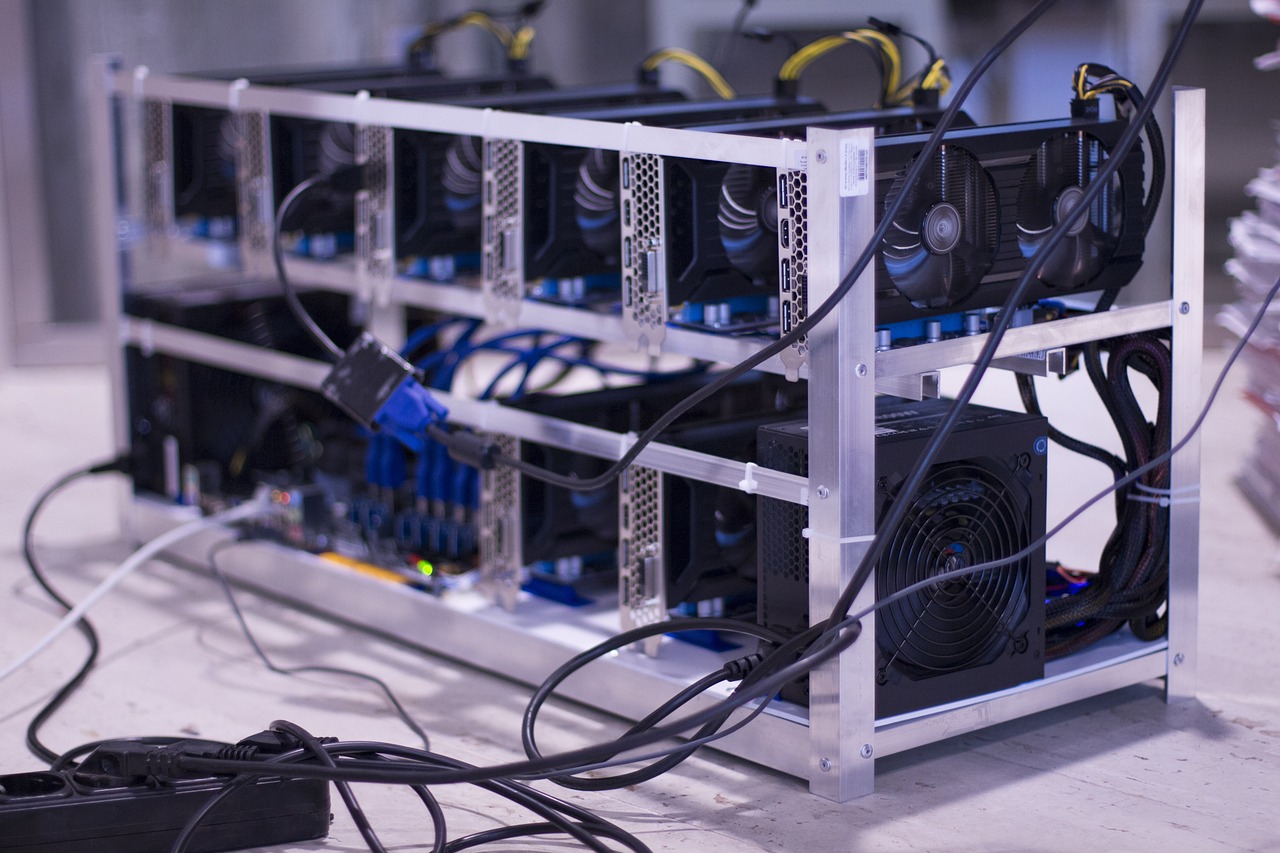
Advantages of Limit Orders
When it comes to trading cryptocurrencies, limit orders offer a range of advantages that can significantly enhance a trader's experience and strategy. One of the primary benefits of limit orders is the control they provide over the price at which a trade is executed. Unlike market orders, which are executed at the current market price, limit orders allow traders to set a specific price point. This means that if you're looking to buy Bitcoin at $30,000, you can set a limit order at that price, and your order will only execute when the market reaches that level. This feature is particularly beneficial in a volatile market where prices can fluctuate wildly.
Another key advantage of limit orders is the price assurance they offer. By using a limit order, you can avoid the risk of slippage, which occurs when the price at which your order executes is less favorable than expected due to rapid market movements. For example, if you place a market order to buy Ethereum during a sudden price surge, you might end up paying much more than you intended. Limit orders safeguard against this by ensuring that you only buy or sell at your predetermined price, giving you peace of mind.
Strategically, limit orders can also be used to set up trades during periods of low volatility. For instance, if you anticipate a price drop for a particular cryptocurrency, you can place a limit order below the current market price. This way, you can take advantage of potential dips without having to monitor the market constantly. Additionally, limit orders can be part of a broader trading strategy, allowing you to create a well-thought-out plan for your trades. You can even set multiple limit orders at different price points, effectively creating a tiered entry strategy that can optimize your trading potential.
Furthermore, limit orders can enhance your overall trading efficiency. They can be particularly useful in situations where you are unable to monitor the market constantly. By placing limit orders, you can ensure that your trades execute automatically at your desired price, freeing you up to focus on other activities. This is especially advantageous for traders who have busy schedules or those who prefer a more hands-off approach to trading.
To summarize, here are some of the key advantages of limit orders:
- Price Control: Set the exact price at which to buy or sell.
- Price Assurance: Avoid slippage and unfavorable execution prices.
- Strategic Planning: Create a structured approach to entering and exiting trades.
- Increased Efficiency: Automate trades and reduce the need for constant market monitoring.
In conclusion, limit orders are a powerful tool in the arsenal of any crypto trader. They provide not only control and assurance but also the ability to execute trades strategically and efficiently. For traders looking to navigate the often unpredictable waters of cryptocurrency markets, mastering the use of limit orders can be a game-changer.
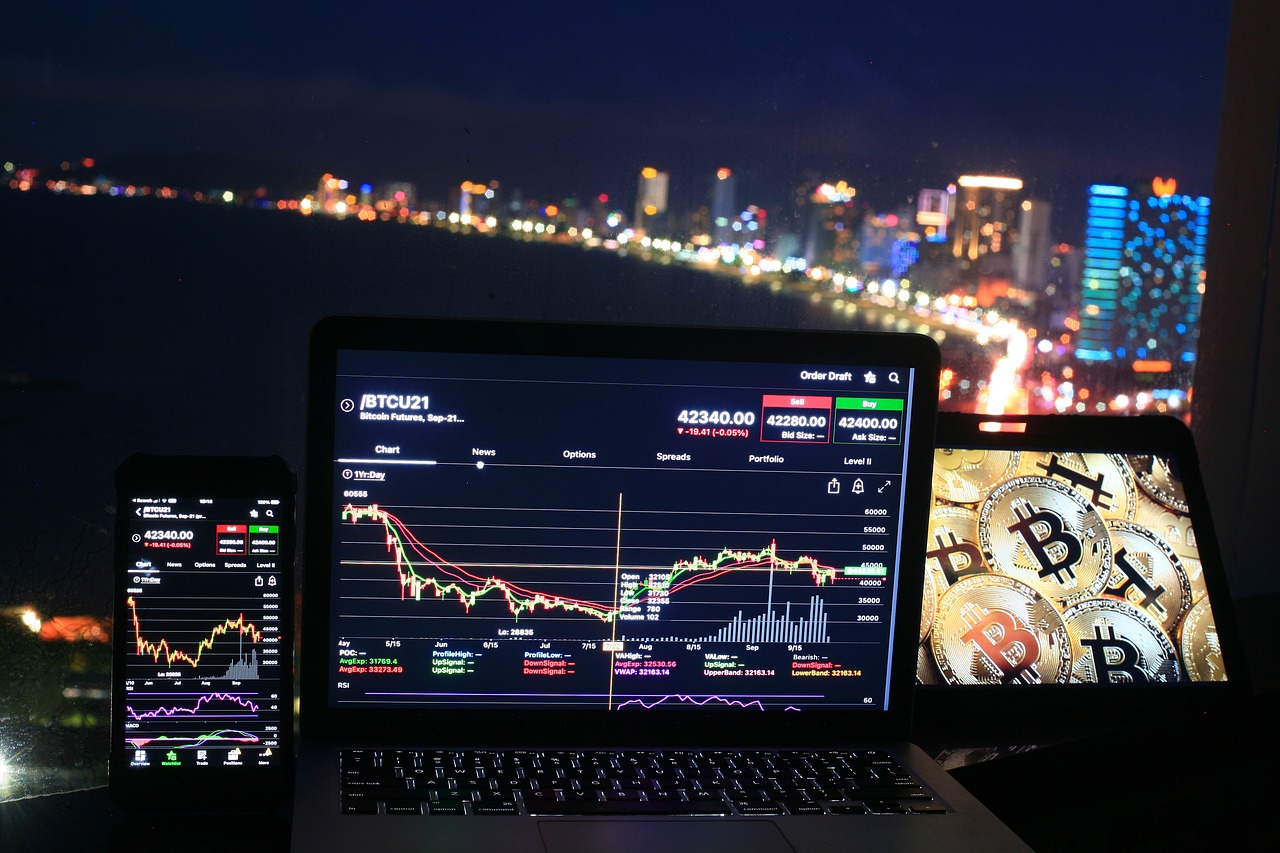
Disadvantages of Limit Orders
While limit orders come with their own set of advantages, they also have notable drawbacks that traders must consider. First and foremost, the most significant disadvantage is the execution delay. Unlike market orders that execute immediately at the current price, limit orders can sit in the order book without being filled if the market price does not reach the specified limit. This can be particularly frustrating in fast-moving markets where prices can change in a heartbeat. Imagine waiting for a bus that never arrives; that’s what it feels like when your limit order is left unfilled.
Additionally, limit orders can lead to missed opportunities. If a trader sets a limit order too far from the current market price, they might miss out on a favorable trade entirely. For instance, if you set a limit buy order at $50, but the price jumps to $55 without touching your limit, you could watch a potential profit slip away. It’s like trying to catch a wave but finding yourself on the beach instead of in the water.
Another point to consider is the market volatility. In highly volatile conditions, prices can fluctuate wildly, which means that a limit order might not only go unfilled but could also end up being executed at a less favorable price than anticipated. This is particularly true in the cryptocurrency market, where prices can swing dramatically in seconds. Traders must stay vigilant and adjust their limit orders accordingly, which can be a hassle.
Moreover, there’s also the aspect of partial fills. Sometimes, only part of your limit order may be executed, especially if you’re dealing with large amounts of cryptocurrency. This can complicate your trading strategy and lead to confusion about your position. It’s like ordering a pizza and only receiving half of it; you’re left wanting more and questioning whether it was worth the wait.
Lastly, limit orders can sometimes create a false sense of security. Traders may feel overly confident in their ability to control the price at which they buy or sell, leading them to neglect other important aspects of their trading strategy. It’s essential to remember that while limit orders provide control, they don’t guarantee that a trade will happen. The market has a mind of its own, and it’s crucial to remain adaptable.
In summary, while limit orders are a powerful tool for traders seeking price control, they come with disadvantages such as execution delays, missed opportunities, market volatility impacts, potential for partial fills, and a false sense of security. Understanding these drawbacks can help traders make informed decisions and develop a more balanced trading strategy.
- What is the main difference between market and limit orders? Market orders execute immediately at the current market price, while limit orders only execute at a specified price or better.
- Can limit orders be canceled? Yes, you can cancel a limit order at any time before it gets executed.
- Are limit orders safer than market orders? Limit orders can provide more control over entry and exit points, potentially reducing the risk of unfavorable trades, but they are not without their own risks.
- What happens if my limit order is not filled? If your limit order is not filled, it will remain in the order book until the market price reaches your specified limit or until you cancel the order.
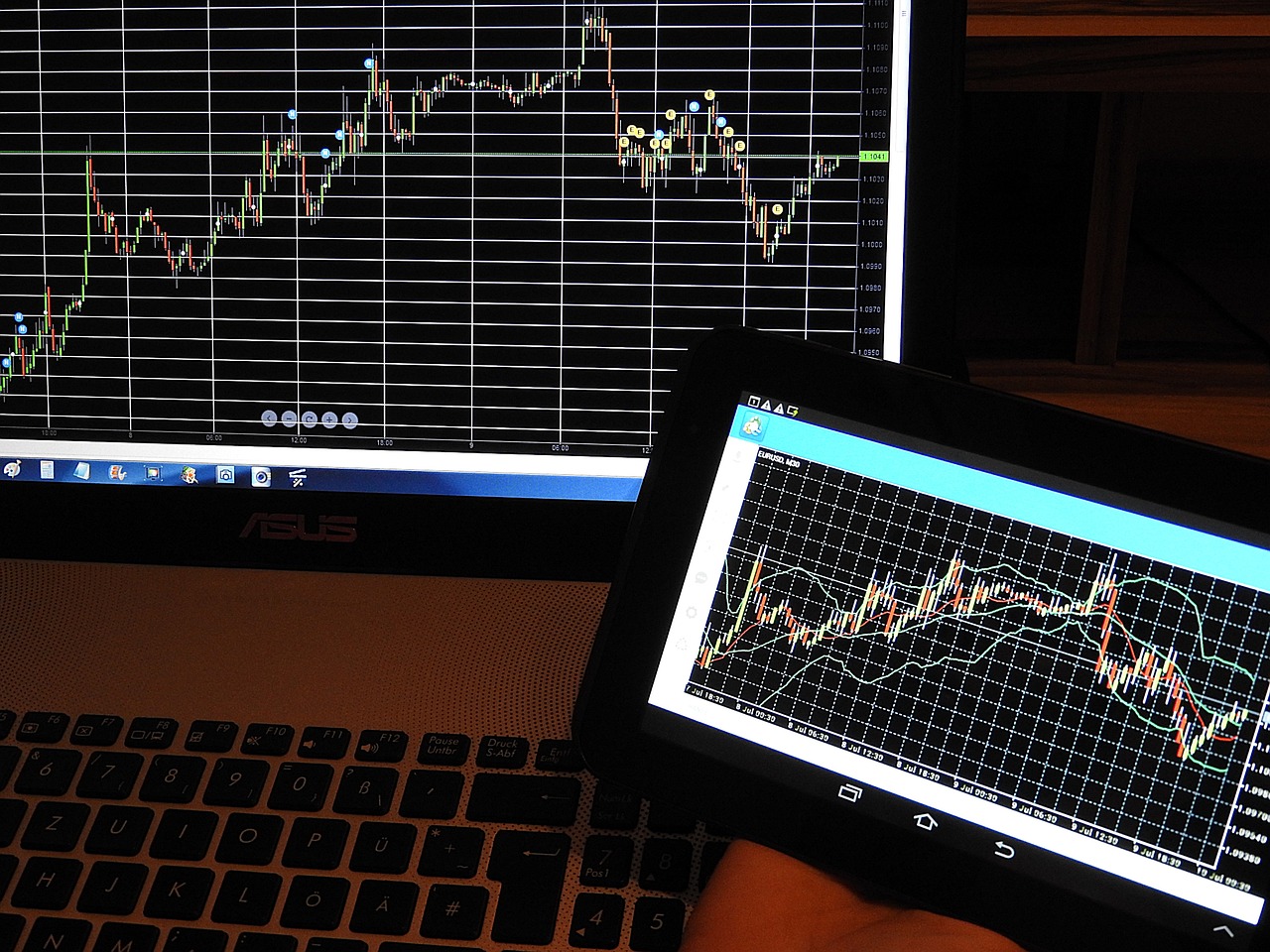
When to Use Market Orders vs. Limit Orders
Deciding whether to use a market order or a limit order can feel like navigating a maze, especially for traders new to the cryptocurrency scene. Each order type serves a distinct purpose and can significantly impact your trading outcomes. So, when should you pull the trigger on one over the other? Let’s dive into the nuances.
If you're in a high-paced trading environment, where every second counts, a market order might just be your best friend. Imagine you're at an auction, and the bidding is intense. You wouldn't want to miss out on that perfect item because you were waiting for your ideal price. In the same vein, market orders allow you to buy or sell instantly at the current market price, making them ideal for situations where speed is crucial. This is particularly beneficial during high liquidity periods, where there are plenty of buyers and sellers, ensuring your order is filled quickly without much price fluctuation.
On the flip side, if you’re looking to maximize your profits or minimize your losses, limit orders are your go-to strategy. Think of it as setting a trap for a fish; you want to catch it at just the right moment when it’s most advantageous for you. With a limit order, you specify the price at which you want to buy or sell. This means you won’t settle for less than your desired price, which can be especially important in a volatile market. If you’re aiming to buy a cryptocurrency that’s currently overpriced, placing a limit order allows you to wait until the price dips to your target before executing the trade.
However, it’s essential to understand that market orders and limit orders can also be used in tandem to create a more balanced trading strategy. For instance, you might place a market order to quickly acquire a cryptocurrency you believe will surge in value, while simultaneously setting a limit order to sell it at a higher price once it reaches your target. This hybrid approach can help you manage risk while still taking advantage of market opportunities.
In summary, the choice between market and limit orders boils down to your trading goals and the current market conditions. If you prioritize speed and are in a liquid market, market orders are the way to go. Conversely, if you’re looking for price control and have a bit more time to wait, limit orders will serve you better. Ultimately, mastering the art of using both order types strategically can enhance your trading effectiveness and help you navigate the often unpredictable waters of cryptocurrency trading.
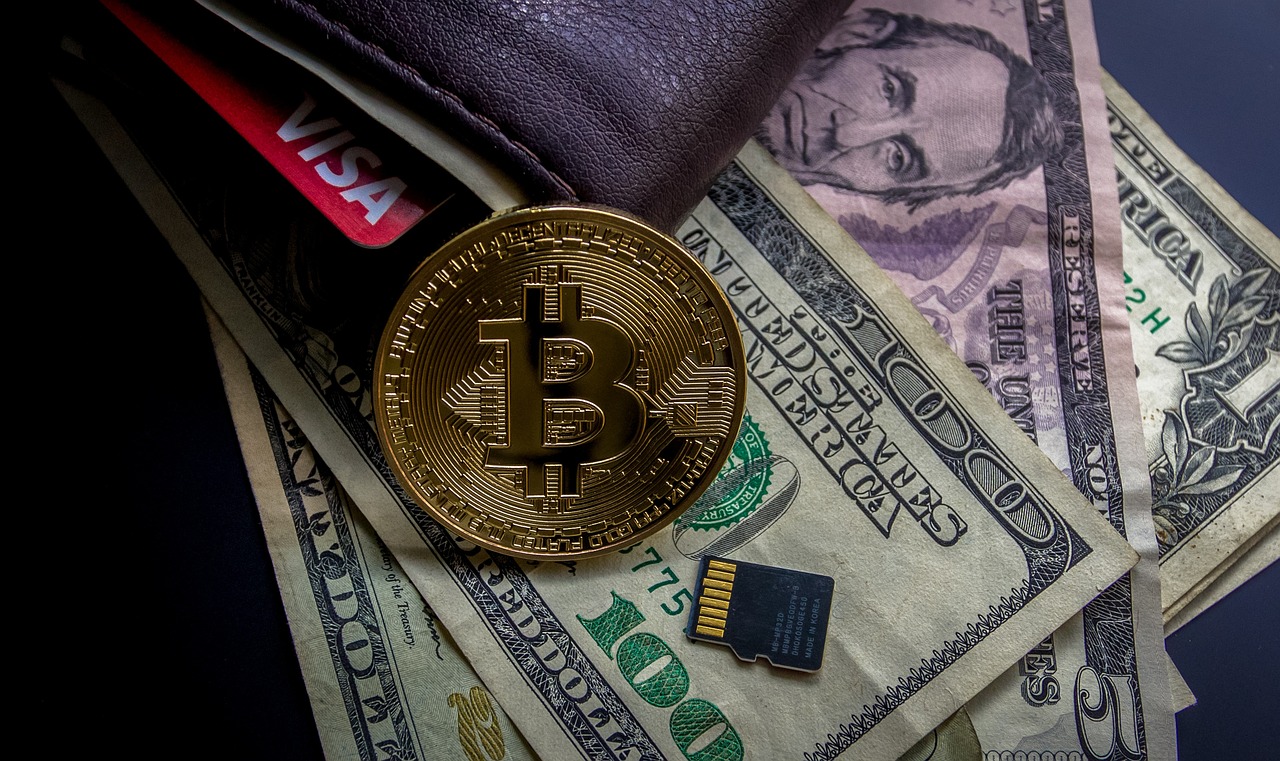
Combining Market and Limit Orders
When it comes to trading in the fast-paced world of cryptocurrency, having a solid strategy is crucial. One effective approach that many traders overlook is the combination of market orders and limit orders. By leveraging the strengths of both order types, you can enhance your trading effectiveness and better manage risks. Think of it as having a toolbox—market orders are your hammer for quick fixes, while limit orders are your precision tools for more detailed work.
Utilizing market orders allows you to enter or exit positions swiftly, which is essential during periods of high volatility. Imagine you're on a roller coaster—when the ride dips, you need to grab hold quickly! On the other hand, limit orders act as your safety net, ensuring that you don’t sell or buy at a price that could lead to losses. They give you the power to set your desired entry or exit points, ensuring that you are not just reacting to the market but strategically planning your moves.
For instance, let’s say you’re eyeing a cryptocurrency that’s currently priced at $100. You believe it’s going to rise, but you want to ensure you get in at a better price. You could place a limit order at $95. If the price drops to that level, your order will execute, allowing you to buy at a lower price. However, if the price skyrockets to $120 and you’re anxious to get in, a market order will allow you to jump on that opportunity without delay.
The beauty of combining these two order types lies in their complementary nature. Here’s how you can effectively use them together:
- Set a Limit Order to Enter: Use a limit order to buy at a price you’re comfortable with, especially if you predict a dip.
- Use Market Orders to Exit: When you’re ready to cash out, a market order can help you execute that quickly, especially if the price is rising.
- Hedging Strategies: If you have a large position, you might use limit orders to take profits at various levels while using market orders to exit quickly if the market turns against you.
By strategically planning your trades with a combination of market and limit orders, you can create a more balanced approach to trading. This not only maximizes your potential gains but also minimizes your risks. However, it’s essential to remain vigilant and adjust your strategies based on market conditions. After all, the crypto market can be as unpredictable as a game of chess—one wrong move can change the entire outcome.
In conclusion, combining market and limit orders can lead to a more effective trading strategy, allowing you to capitalize on market opportunities while maintaining control over your trades. Whether you’re a seasoned trader or just starting, understanding how to blend these order types can enhance your trading experience and lead to better financial outcomes.
- What is the primary difference between market and limit orders? Market orders execute immediately at the current market price, while limit orders execute only at a specified price or better.
- Can I use both types of orders simultaneously? Yes, many traders use both market and limit orders to take advantage of different market conditions and strategies.
- What happens if my limit order is not executed? If the market does not reach your specified price, the limit order will remain open until it is either executed or canceled.
- Are there any risks associated with using market orders? Yes, market orders can lead to unfavorable prices, especially in volatile markets, as they execute at the best available price.
Frequently Asked Questions
- What is the main difference between a market order and a limit order?
The primary difference lies in execution. A market order buys or sells immediately at the current market price, while a limit order sets a specific price at which you want to buy or sell. Think of a market order as jumping on a moving train, while a limit order is like waiting for the right train at the right time.
- When should I use a market order?
You should consider using a market order when you need to execute a trade quickly and are less concerned about the exact price. This is especially useful in high liquidity situations where prices are stable, and you want to ensure your trade goes through without delay.
- What are the risks associated with market orders?
While market orders are fast, they can expose you to unfavorable prices, especially in volatile markets. Imagine trying to buy a ticket for a concert at the last minute; you might end up paying much more than if you'd planned ahead!
- Why would I choose a limit order instead of a market order?
A limit order gives you control over the price at which you buy or sell. If you’re aiming to purchase at a specific price, a limit order is your best friend. It’s like setting a budget for shopping; you won’t spend more than you want!
- Can limit orders fail to execute?
Yes, limit orders can remain unfilled if the market price doesn’t reach your specified limit. It’s a bit like fishing; sometimes, you set your bait, but the fish just aren’t biting!
- How can I effectively combine market and limit orders?
You can create a balanced strategy by using market orders for quick trades and limit orders for more strategic entries or exits. This combination can enhance your trading effectiveness and help manage risk, like having both a parachute and a safety net when skydiving!
- What should I consider when choosing between these order types?
Consider your trading goals, the current market conditions, and your risk tolerance. If speed is crucial, go with a market order. If price control is more important, a limit order might be the way to go. It's all about aligning your strategy with your trading style!

